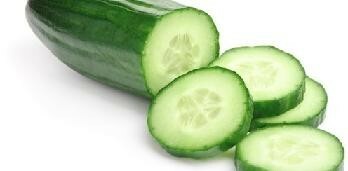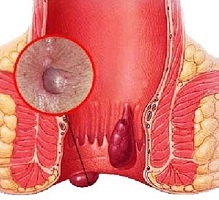After forty-five or fifty years many people are faced with hyperopia (presbyopia of the eyes). With such eye disease, it becomes very difficult to read small letters or to distinguish small objects near.
Long-sighted people force either glasses or contact lenses. In some cases, other means are used to restore vision. Most often these are drops for the eyes.
In this article, we will tell you about the advantages of using eye drops for farsightedness, about and the types and methods of application.
Content
- 1Definition of disease
- 2Accompanying illnesses
- 3Advantages of using drugs
-
4Types of drugs
- 4.1Drops for eyesight improvement
- 4.2Vitamin complexes for vision improvement
- 5Application rules
- 6Video
- 7Conclusion
Definition of disease
Hyperopia is a disease in which the image focus is located behind the retina as a result of flattening the cornea or reducing the size of the eye.In other words, a person does not see objects that are close to each other, but it is good at distinguishing objects that are at a distance.
The cause of this disease can be the relatively flat curvature of the cornea, its combination with insufficient refractive force lens, increased density of the lens, short axis of the eyeball, deviation from the average statistical values of optical indicators.
In young people, the lens of the eye can adapt and accommodate the eye's resources to increase the optical power.But in the elderly this ability is lost, as the resources of the eye are exhausted with age, and the symptoms of hyperopia develop.
Types of hyperopia:
- Naturalphysiological hyperopia (typical for infants).
- Congenital(vision with time alone does not come to normal).
- Age(occurs usually after forty-five years).
Age-related farsightedness can not be prevented. But you can avoid it. This requires timely correction of vision with the help of glasses, contact lenses or surgical intervention.
Signs of hyperopia can be eye fatigue, overexertion during prolonged work. Also, eyes often become inflamed, and children may experience strabismus or a "lazy eye" symptom.
Depending on the severity of the disease divided into three groups:
- Poor farsightedness(up to +, diopters).
- Average farsightedness(up to +, diopters).
- Strong farsightedness(more than +, diopter).
With a weak degree of farsightedness, the near and far sight is usually good, but there may be rapid fatigue, headaches, dizziness.With an average degree of vision near is not very good, and with high farsightedness - poor as closer, and distant vision, since the eyes can no longer focus on the retina image subjects.
It is very important to see the doctor when the first signs of hyperopia appear. Otherwise serious complications can develop. The specialist will check the visual acuity, examine the fundus, perform ultrasound. Also it will help to pick up lenses.
Do not forget about the prevention of this disease. There are several simple recommendations aimed at preventing farsightedness:
- Lighting mode.The power of the lamps should be within sixty to one hundred watts. The fluorescent lamps do not fit.
- Observance of the regime of visual loads.It is necessary to alternate visual work with active rest.
- Special training and gymnastics for the eye muscles.Exercises should be done every thirty minutes.
- Rational, healthy food.The diet should contain the necessary amount of proteins, fats and carbohydrates, vitamins (especially vitamins of group A) and microelements (zinc, copper, chromium, manganese and others) necessary for the body.
Accompanying illnesses
The main, accompanying farsightedness disease is peripheral degeneration or thinning of the retina. Due to degeneration, rupture of the retina or its detachment may occur.
The following diseases can also occur:
- Recurrent blepharitis.With this disease the ciliary edge of the eyelids is inflamed. It is accompanied by reddening and swelling of the edges of the eyelids, a sensation of heaviness and itching, increased photosensitivity, rapid eye fatigue, abnormal growth and loss of eyelashes.
- Conjunctivitis.Inflammatory process affects the inner surface of the eyelids and sclera. Conjunctivitis is accompanied by redness, swelling of the eyelids, mucous or purulent secretions from the eyes, lacrimation, burning and itching.
- Barley.This is an acute infectious disease caused by the suppuration of the Zeiss gland, the meibomian gland or the eyelash follicle. Barley is not dangerous, but if you try to remove the abscess yourself, then the risk of sepsis increases.
Advantages of using drugs
Advantages of using eye drops to improve vision at hyperopia:
- Effective for people over the age of thirty.
- It can be used to relieve stress from the eyes caused by prolonged work at the computer.
- Suitable for the appearance of the first signs of hyperopia and violation of eye accommodation.
- It can be used for overwork and rubbing in the eyes, burning, photophobia.
Types of drugs
It must be remembered that there are no special drops that would improve vision by one hundred percent. But such drugs must be used for the treatment of hyperopia. They restrain the progression of this disease and help to eliminate its unpleasant symptoms.
Types of drugs with farsightedness:
Drops for eyesight improvement
- Taufon. These drops are recognized as the most effective in age-related farsightedness. They are also prescribed for the treatment of retinal diseases, cataracts and corneal injuries. The active substance accelerates the processes of regeneration of the damaged eye walls, normalizes the pressure of intraocular pressure and improves the metabolism in cells. Taufon is suitable for eliminating discomfort, irritation and a feeling of sand in the eyes. Apply up to four times a day for a month or longer.
- Oftan Kathahrom. Drops are prescribed for the prevention and treatment of cataracts. They effectively moisturize the eyes, relieve a feeling of tension and inflammation. Apply on a couple drops three times a day.
- Quinaks. This drug is also prescribed for the treatment of cataracts. It resolves the accumulated protein in the lens, so that the surface of the eye becomes transparent, and vision improves. These vitamin drops need to dig in three to five drops to five times a day.
- Vita-Yodourol.The composition of the drug includes vitamin PP, nicotinic acid, adenosine, calcium and so on. Drops improve the metabolism in the lens of the eye and prevent the accumulation of proteins, improve the nutrition of the eyes and their cells. Apply on a couple drops three times a day.
Do not forget to use drops to improve your eyesight every day, otherwise the next day you may experience dryness and pain in the eyes.
Vitamin complexes for vision improvement
- Ogovit. The composition of tablets includes many vitamins, minerals and trace elements, of which vitamins A, E and B2, tocopherol, ascorbic acid are especially useful for the eyes. When using this drug improves the vitreous and retina. It has a positive effect on the lens of the eye. Take one tablet twice a day.
- Riboflavin. The composition of drops includes vitamin B2. They are used to treat many eye diseases, for example inflammation of the cornea, iris, cataracts or with deterioration of vision in the dark. Bury one drop twice a day.
- The ophthalmologist. The composition of the drug includes anthocyanins, blueberries, vitamin A, dihydroquercetin. The oculist is prescribed for the treatment of hyperopia, myopia and with reduced vision in the dark. Take one capsule during each meal (three times a day) for three weeks.
- Myrtilene. The composition of these capsules is a bilberry extract. The drug improves the blood supply of retinal cells and promotes better work of the eye muscles. Take one capsule with meals three times a day for a month.
- Focus. This drug improves eye function and helps focus on close subjects. Reception of Focus leads to strengthening the retina, reducing the effect of ultraviolet radiation on the eyes, restoring the cellular metabolism in the organs of vision. Take one capsule once a day.
Application rules
Rules for the application of eye drops:
- Wash hands with soap and water before use.
- Bury the drops sitting.
- Throw your head slightly back, pull the lower eyelid, direct your eyes upward.
- Drink the required number of drops in the lower eyelid at the inner corner of the eye, without touching the eyelids and pipette.
- Release the lower eyelid, close your eyes for a few minutes.
All about eye salve Solcoseryl
Eye ointment from the inflammation of the eyelids is described here.
All about eye drops Bromfenac http://eyesdocs.ru/medicinaoperacii/lekarstva/glaznye-kapli-bromfenak-instrukciya-po-primeneniyu.html
.Video
Conclusion
Hyperopia usually occurs after forty-five years. Unfortunately, it does not respond to treatment, but it is possible to reduce the appearance of its symptoms. And to improve the vision will help special drops, examples of which we examined in this article.
Also read about myopia and astigmatism.



